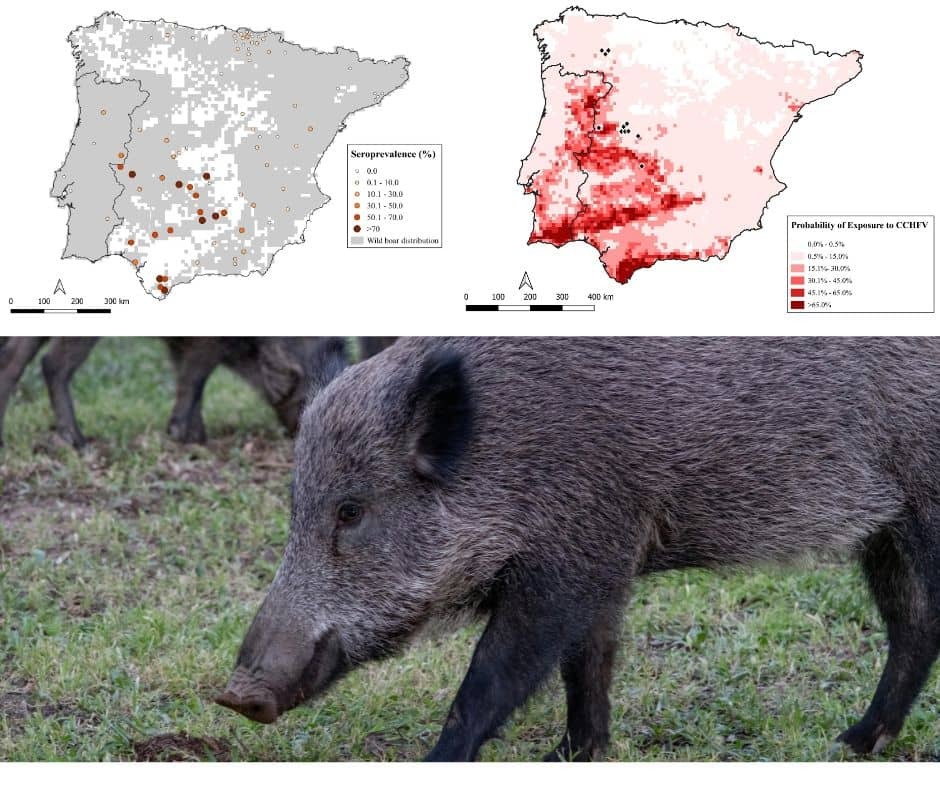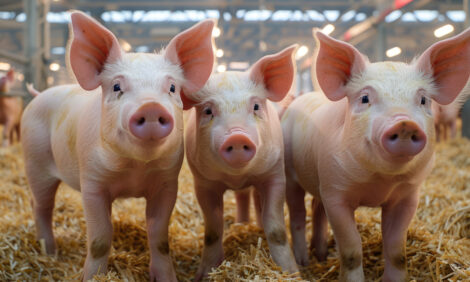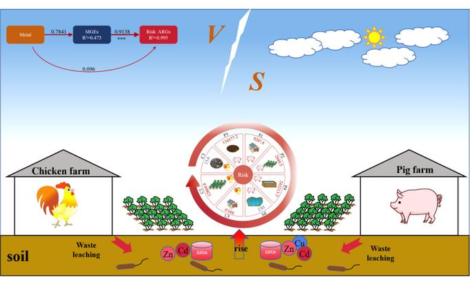



Wild boar as sentinel of Crimean-Congo hemorrhagic fever in Spain and Portugal
An epidemiological model based on wild boar allows the identification of new high-risk foci of exposure to the Crimean-Congo hemorrhagic fever virus in Spain and PortugalThe Crimean-Congo hemorrhagic fever (CCHF) is one of the human viral diseases of greatest concern to the World Health Organization (WHO) because of its high mortality, the absence of effective vaccines, its capacity for person-to-person transmission, the great mutational capacity of the virus that causes it and its pandemic potential.
In Spain, where the Crimean-Congo hemorrhagic fever virus has been endemically circulating for a long time, the first case occurred in 2013, and since then there are already 14 confirmed cases in the country, with 4 deaths up to April 2024. In Portugal, the first evidence of exposure to CCHF virus occurred in 1985, but there have been no human cases.
Since there is no treatment or vaccine to protect people against Crimean-Congo hemorrhagic fever, prevention is the main tool to fight against the spread of this disease, so it is essential to know where the risk of contracting it is highest.
The causative virus is transmitted by ticks of the genus Hyalomma, and although it only causes illness in humans, it is a virus that can infect many animal species that contribute to the maintenance of ticks populations transmitting the virus and its circulation, and that can serve as sentinel species to monitor the presence and dynamics of the disease.
A clear example is found in the deer (Cervus elaphus), which has already been used as a sentinel species by scientists from the Health and Biotechnology Research Group (SaBio) of the Instituto de Investigación en Recursos Cinegéticos (IREC – CSIC, UCLM, JCCM) for the elaboration of the first national risk map of infection by the Crimean-Congo hemorrhagic fever virus.
As a continuation of the aforementioned research work, scientists from the SaBio Group of the IREC, in collaboration with a multidisciplinary team of international researchers, have analyzed the degree of exposure of Iberian wild boar (Sus scrofa) populations to CCHF virus.
This wild ungulate, widely distributed in the Iberian Peninsula, is one of the main hosts of ticks of the genus Hyalomma, so the researchers decided to evaluate its use as a model to identify the determinants of the risk of infection of this disease and translate them into a more complete risk map, applicable to Spain and Portugal.
The results of this work, recently published in the journal Ticks and Tick-Borne Diseases, show that 63.3% of the wild boar populations and 19.4% of the animals sampled were positive for Crimean-Congo hemorrhagic fever virus. The highest exposure to the virus was observed in southwestern Spain, in areas where the tick Hyalomma lusitanicum is most abundant and where most cases of human disease have occurred.

The model developed using the wild boar as sentinel species also captured areas of high risk of infection in eastern and northeastern Spain, outside the core distribution of Hyalomma lusitanicum, but where other studies have found animals of different species with antibodies to the virus, so they are areas of circulation of the pathogen.
In the case of Portugal, this is the first risk map of exposure to the Crimean-Congo hemorrhagic fever virus. Overall, the model based on wild boar accurately anticipates the risk to the human population and can serve as a tool to prevent the occurrence of clinical cases in both Spain and Portugal.








